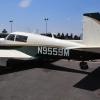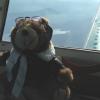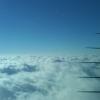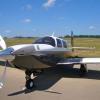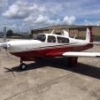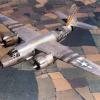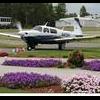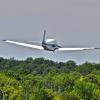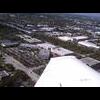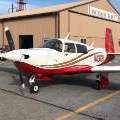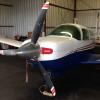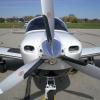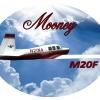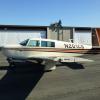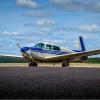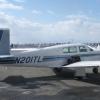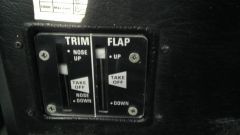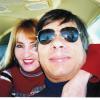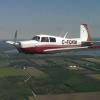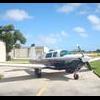Leaderboard
Popular Content
Showing content with the highest reputation on 03/18/2014 in all areas
-
Captain Zaharie Ahmad Shah and First Officer Fariq Abdul Hamid are the two most pathetic pilots in the world. Why? Because they're dead and they can't defend themselves. They are terrorists, suicidal maniacs, criminals, magicians, and even aliens in the minds of the news media's experts in the industry. These experts of private pilots, retired airline pilots, and Air Force Colonels are all coming up with evidence condemning these two pilots without anything solid. They are getting paid to sit in that CNN seat and feed you this "expert" information. There is no solid evidence, only clues. Some of the most important clues in this mystery that I see include: 1) The sudden removal of power to several key communications systems and radar transmitters. 2) The sudden and unexplained turn away off of the programmed northerly course towards the west. 3) The lithium batteries that were onboard as cargo. 4) The captains homemade Boeing 777 simulator which has been confiscated by the Malaysian Police. I have never flown the Boeing 777. Only the 767 and 757. I've had several friends ask me what I think happened. While I hate speculation without any solid evidence that a cockpit voice recorder or flight data recorder can provide, it may not be possible to retrieve that information now so only the experts are left to criminalize these two pilots. I am not defending these two dead pilots, only providing a "guess" based on real clues as to what really happened. I may be wrong. First, the sudden removal of power to the transponder and ACARS systems. For those that don't know, the transponder simply identifies the aircraft to ATC radar, and ACARS (Aircraft Communications Addressing and Reporting System) provides communication with the company including engine data to the company and weather data from. When you're out of radar contact, ACARS becomes the primary position reporting for the flight. It can be satellite provided. There is so much emphasis on how one of these pilots could shut down each of these systems. One theory included him climbing down a latter under a compartment in the first class galley. Then using extensive aircraft systems knowledge, he removes power from the system rendering it useless. Most pilots have never seen this compartment. Mechanics know it well. My speculation, that I'm entitled to use as well, is that a fire can burn through the wires that provide power to those systems. Second, the sudden and unexplained turn off the programmed course towards the West. CNN said that someone had to have extensive training to reprogram the flight management computer that far off course and it had to be malicious and terrorist related. I think they did exactly what they were trained to do. At my airline the standard practice while on a North Atlantic track or Pacific jet route is to preposition the heading selector of the flight guidance control panel (autopilot) to a heading perpendicular to the flight path to the shortest turn towards a divert airport. If an engine were to quit, a rapid decompression, or let's say something worse like a fire where to happen, this would be a good practice. Rather than trying to type in the flight management computer (FMC) the information needed to get the airplane to turn, you simply press the heading select button that was positioned towards the West. In a GPS world where every aircraft is stacked up on routes and airways and separated by only 1000' vertical separation and just a few feet horizontal, you can't just start descending without first getting off the programmed course. These pilots may have turned off course (towards the West) so they can descend and initially turn towards Kuala Lumpur. They just didn't get the chance to program the rest of the way home. The fire was too intense. Third, I have mentioned fire twice now. Lithium batteries have been on the radar of pilots unions for several years now. We don't just bitch about pay and benefits. Most of our battles are towards safety. The Air Line Pilots Association (ALPA) has been fighting hard to regulate the safe handling of lithium batteries as cargo onboard US air carriers since the 2010 crash of a UPS Boeing 747 transporting lithium batteries. But only two people (pilots) died on that flight. So there was no need for regulation. If a fire were to start in a forward cargo compartment and spread to the avionics compartment, the pilots would have one hell of a battle on their hands. As a student pilot I heard the words "Aviate, Navigate, Communicate" during an emergency. Those words apply to a Cessna pilot or a Boeing pilot. With an emergency, you aviate first. Fly the airplane and fight the fire! You gather information and run the appropriate checklist. Next navigate. Divert! Kuala Lumper is closest. Press the heading select button and at least start the turn towards that direction. Communicate. It appears they could have run out of time and the radios or pilots were not capable of transmitting. But how could a Boeing 777 that has a fire onboard continue to fly for that much time? The airplane is one of the strongest and most redundant airplanes ever built. Once established on a heading and altitude, each wing mounted engine is producing thrust from each wing main fuel tank. A fire may destroy the navigation, communication and manipulation that the cockpit can provide. But the engines run on fuel. Which they have. And finally, the captain had a homemade Boeing 777 simulator in his home. What a nerd! No seriously, he is an aviation nerd! The guy probably spent a good amount of his well earned money that he made from flying airplanes.....on flying airplanes! If he was an American he may have been able to afford to purchase his own airplane. He'd probably attend Oshkosh every year! But in many Asian and other foreign countries airplane ownership is illegal. His passion for flying only exists at work and in the virtual world. I spend a good amount of money that I make from flying airplanes on my own airplane because it's what I love. If I couldn't have that right, I'd at least have a Microsoft Flight Simulator. I guess I'm an aviation nerd too! Yes, there are many more clues about passports and political beliefs of the pilots and passengers. They even have Muslim names. There is a huge investigation to continue. Captain Zaharie Ahmad Shah and First Officer Fariq Abdul Hamid may be the most despicable pilots because of their actions. Or they may have loved their jobs and done their best. We may never know the truth. I won't condemn them without the facts. Brian Mulrooney10 points
-
Master Instructors LLC is proud to announce that Mike Elliott of Tarpon Springs, Fl, United States recently earned the Master Certificated Flight Instructor (MCFI) designation for the First time. Mike is a long-time contributor to this board, and the owner of an exceptionally nice M20F. I cannot think of a better resource for flight training in general or Mooney specific training in particular, as well as being a pleasant companion in the cockpit. Congratulations Mike.8 points
-
True - true. This is extremely strong evidence that he is really flying a Piper Cherokee 140, between the strange glare shield and sharp pictures! A picture from a Mooney is always blurred due to the speed. In fact, the picture from a Mooney Rocket is shifted toward the reds due to the Doppler red shift as we are traveling at a large fraction of the speed of light.3 points
-
2 points
-
Unfortunately all we have is speculation in this case. Even the facts can't really be taken as facts. They are only facts as reported by CNN and the Mayla government. Both are unreliable, not sure which one is more unreliable. They should look at the pilots and all available information but no one should rush to conclusions or blame. We need to realize that CNN and others are only selling airtime, not the truth. Until there is some hard evidence, who can say what happened or who is to blame.2 points
-
How's your memory? I heard it's the first thing that.... sometimes I make myself chuckle... Best regards, -a-2 points
-
Who really cares what someone else does with their airplane, for any reason other than mild curiosity? There is always more than one right way to do something. Sent from my iPhone using Tapatalk2 points
-
Flew alongside the city this weekend, Hudson Corridor north bound and used the garmin camera to film the flight. I tried a more forward facing angle, and will get a second camera to blend in the tail-cam perspective soon. Was pretty bumpy and I used the image stabilizer but still rough near central park. (Also it looks like the GPS altitude was bumped up 1000' for some reason) Im chipping away at this till we nail the best capture, editing and filming style. http://switchboxcontrol.com/news/2014/3/18/video-nyc-flight-hudson-corridor-northbound1 point
-
There was a missing category in the poll. Mine would have been "Most of the time except when I forget." I have missed the flaps a few times on takeoff and then I wonder why it took so long to rotate. The myster is solved when I try to raise the flaps and the switch is already up.1 point
-
Gary -- you have no idea how much it cost Dan & I to buy enough silver iodide to seed the clouds around here to get them to fly south! Sent using Tapatalk1 point
-
I'm still trying to figure out why he has that major curve in his panel Everyone knows a Mooney panel doesn't look like that. And another thing, his still photos are too clear. Everyone knows taking a picture in a Mooney leads to a blurred photo.1 point
-
I saw that Wired article earlier in the day and I also think it's the most likely explanation I've seen so far. If the crew and passengers were incapacitated by smoke but somehow the fire extinguished itself and the plane kept on flying, that would answer many questions. My mom still favors the UFO theory, so just remember...The Truth is Out There. (This whole event really could come right out of the X-Files.)1 point
-
1 point
-
Congratulations Mike - you deserve this award for all the hard work you put into helping your students. As a Mooney specific instructor, we are most fortunate to have you amongst our breed. I am glad you will continue doing this for as long as you can. I'll tell you what, I'll continue running marathons for as long as you will continue Mooney instructing.1 point
-
Thanks for the kind words Glenn. I have always enjoyed working with you, your wife and in fact, all Mooney pilots from a lot of different parts of the country. I plan to continue until the FAA says I cannot.1 point
-
1 point
-
OK Mike, I'll play Devils advocate..... lithium battery fire in hold burns thru wiring for ACARS, pilots troubleshooting problem loss of ACARS is not that serious... fire burns out transponder wiring next....pilots never notice...ATC doesn't report the loss to the aircraft.... After last normal radio transmission other systems start going off line because of fire in fwd hold, smoke starts filling cabin... radios fail because of the fire.... pilots changes heading to divert for emergency landing, fire continues to burn pilot climbs to FL 450 trying to extinguish fire..... plausible? I bet we could come up with hundreds of scenarios of what could have happened the only way we will be sure is to find the aircraft. Brian1 point
-
Also look for APS... http://www.advancedpilot.com A couple of things to know or keep in mind... The engine manufacturers, plane builders, and pilots are not necessarily on the same page. Some want to go fast, others want to go efficiently, and some like to pick how to operate by the amount of free cash in their pocket that day. In some cases the marketing department wrote pseudo technical documents that indicate riding your horse hard and putting her away wet is an acceptable practice... Hard and wet... Some pilots can afford a new engine whenever the need arises. Trade the old plane out when getting the new one from the factory... Hard... The next level expect to afford new cylinders at 1000 hrs. Typical of a TC'd engine run at highest continuous output levels. Gentle... The place where most of us operate is make everything last at least to TBO, if possible, or even beyond. LOP where / when available. ROP with an extra margin for climb or if the engine can't manage LOP. Two engines known for not handling LOP over a wide range, carbureted or TC'd with unbalanced intake tubes... Either way APS has a lab facility with instrumented engines that demonstrate the things you want to know about. David Brown of APS (Australia) appears here on MS frequently. Best regards, -a-1 point
-
1 point
-
Very thoughtful post Brian. A fire or some such severe emergency could explain a lot - thank you. Can you think of why there would be a climb to FL45? Good point on the air flight simulator. As soon as I heard that reported on the news as if it meant something - I immediately thought about how cool I thought it was when I found the Mooney Rocket model just like my own airplane on Xplane - which I have on this very computer I am typing on right now - I bet a lot of us are nerds, proud nerds.1 point
-
Exercising the magnetos... Right, both, left both (looking for the 100 rpm drop) Exercising the prop... Are you guys pulling it all the way out to see what it drops too? The idea is to get oil to flush through the system, and test it's functionality. Maintain control when pulling out the knob. One day it might not drop rpm. This is a sign of internal oil leak, a $5 seal in a 1 AMU place... Now I'm going back to reading the procedure.... Good morning, -a-1 point
-
I think due to global warming the Bermuda Triangle has now shifted over to the Indian Ocean On a more serious note, I hope they figure this out soon because it's sure beginning to look like the implications could be quite serious if we don't get to the bottom of this soon. Sent from my iPad using Tapatalk HD1 point
-
1 point
-
Set attitude indicator to level on the ground. Take off and climb to altitude. Level off, accelerate, set power. Reset attitude indicator, since cruise attitude will vary with load, speed and CG. Takes three seconds and one brain cell; in IMC, it takes three seconds and four brain cells.1 point
-
And we can all agree, that all POHs and Owners Manuals do not agree . . . thus the eternal debate between those of us who follow our own particular "book," which may disagree on various points with other years' "book," even for the same model . . . . . After all, it's not rocket science, it's just low-speed aerodynamics.1 point
-
1 point
-
Exactly. There aren't coordinates. All they know is that the signaling continued for seven hours so it gives them an idea of how long the plane was running.1 point
-
1 point
-
1 point
-
VII. Model M20F (cont’d) C.G. Range (+45.0) to (+50.1) at 2740 lbs. (Landing gear extended) (+41.8) to (+50.1) at 2470 lbs. (+41.0) to (+50.1) at 2250 lbs. or less (Straight line variation between points given). Retraction moment 615 in. -lbs. Empty Weight C.G. Range None Maximum Weight 2740 lbs. No. of Seats 4 (2 at +31.5 to +39.0, 2 at +70.7 to 75.2) Maximum Baggage 120 lbs. (+95.5), 10 lbs. (+119.0) Fuel Capacity 64 gals. (Two integral tanks in wings at +48.4) See NOTE 1 for data on unusable fuel. Oil Capacity 2 gal. (-11.5) NOTE 1:The certificated empty weight and the corresponding center of gravity location must include unusable fuel (not included in fuel capacity) as follows: 15.0 lb. (+48.4) for the M20F and M20J1 point
-
1 point
-
I am positive. Early in my ownership I knocked the interior switch accidentally and killed my battery. The battery never recovered from that and had to be replaced. I learned the system then. Not wanting a repeat I took out that fuse and that killed the clock. Later on I put back the fuse and removed the interior bulbs. Now I have a clock that runs but does not keep time, thinking about a davtron digital replacement. Sent from my iPad using Tapatalk1 point
-
Sorry, I don't have enough experience (or chicken) to fly there. 42 hours in 14 months that I have had her. Jan 20 was my last flight that's almost 2 months ago. Its either crappy weather or work but something always comes up.1 point
-
Looking at the POH for our '78 J, it provides data for 2300# and 2740#. Looking at the 8000' performance chart, the difference in speed between the two weights varies from as little as 2 knots at high power/high RPM settings to as much as 11 knots at low power/low RPM settings. Of course this probably assumes a constant CG location. By moving the CG aft, as mentioned above, you not only reduce drag caused by the requirement for extra lift, but you also reduce drag from the tail as well. How much? Good question. Let's say you have 30 pounds you can put in the front seat or the baggage area. For my J the baggage area is about 46" further aft, call it 4' for simplicity. 4 x 30 = 120 ft-lbs. Since the plane is about 25' long, again for simplicity, let's guess that the center of lift for the tail is 16' aft of the aircraft CG. 120 ft-lbs/16 ft = 7.5 lbs. So moving 30 pounds from the front seat to the baggage compartment would make a difference of about 7.5 pounds less down force on the tail, and 7.5 lbs less lift required by the wing. So even if we consider both to create equal drag, that would be the equivalent of 15# less weight. 15/440 = 0.034. Even if we apply that at the low RPM and low power difference of 11 knots, the difference here would be about 0.375 knots. At the high RPM and high power setting, it would make a difference of 0.068 knots. Not much difference. On the other hand, if you are taking a beautiful 110 lb woman and a 250 lb man with you... putting the beautiful woman next to you might be a good idea... for more than one reason.1 point
-
As Hank already suggested, for best speed you want the CG to be as far aft as possible while still remaining within the envelope. In our airplanes, the CG will always be forward of the center of lift, which means that the tail must produce a downward force to keep the airplane from turning into a lawn dart. The downward lift created by the tail creates induced drag, but more importantly, the downward force must be counteracted by the wing producing more lift, resulting in an even greater induced drag. So, if weight can be shifted rearward bringing the CG closer to the center of lift, the tail needs to produce less downforce and the wing doesn't need to produce as much lift to counteract that downforce. Imagine a 3000lb. airplane with a forward CG that requires the tail to produce 100lbs of downforce. In this airplane the wing actually needs to produce 3100lbs of lift. If weight could be shifted rearward so that only 50lbs of downforce was required, the wing now only needs to produce 3050lbs of lift, and the airplane will be marginally faster. Realistically, moving 30lbs from the front seat to the baggage compartment will probably not make any noticeable increase in speed.1 point
-
From the album: Trim Window
Before and After photo of my new trim window. Laser cut acrylic. Want one? Let me know.1 point -
Thanks for your comments. But it was not imagination but just simple common sense. Which appears to be lacking in this investigation. José1 point
-
I am looking back at the original post by José on March 9th. When I read it first I thought that he had vivid imagination and that the odds of this being what happened were kind of remote. As the story unfolds, I see more and more ressemblance with the hypothetical scenario José came up with. Ataboy José I have been following this event out of curiosity and feel very sad for the families and people involved. Too bad we cannot join the search with our mooneys... I would. Yves1 point
-
On March 2 I flew with a friend to the Pacific Coast of Guatemala. On our return flight we saw that the Pacaya Volcano close to Guatemala City had erupted. It was a spectacular and scary scenery. Very turbulent, but extremely beautiful.1 point
-
Question regarding replacement of the biscuits themselves. The annual on my '83 J will take place this month and all of the biscuits are being replaced, having been installed in 2000. After they are replaced can I expect anything different in ground handling?1 point


